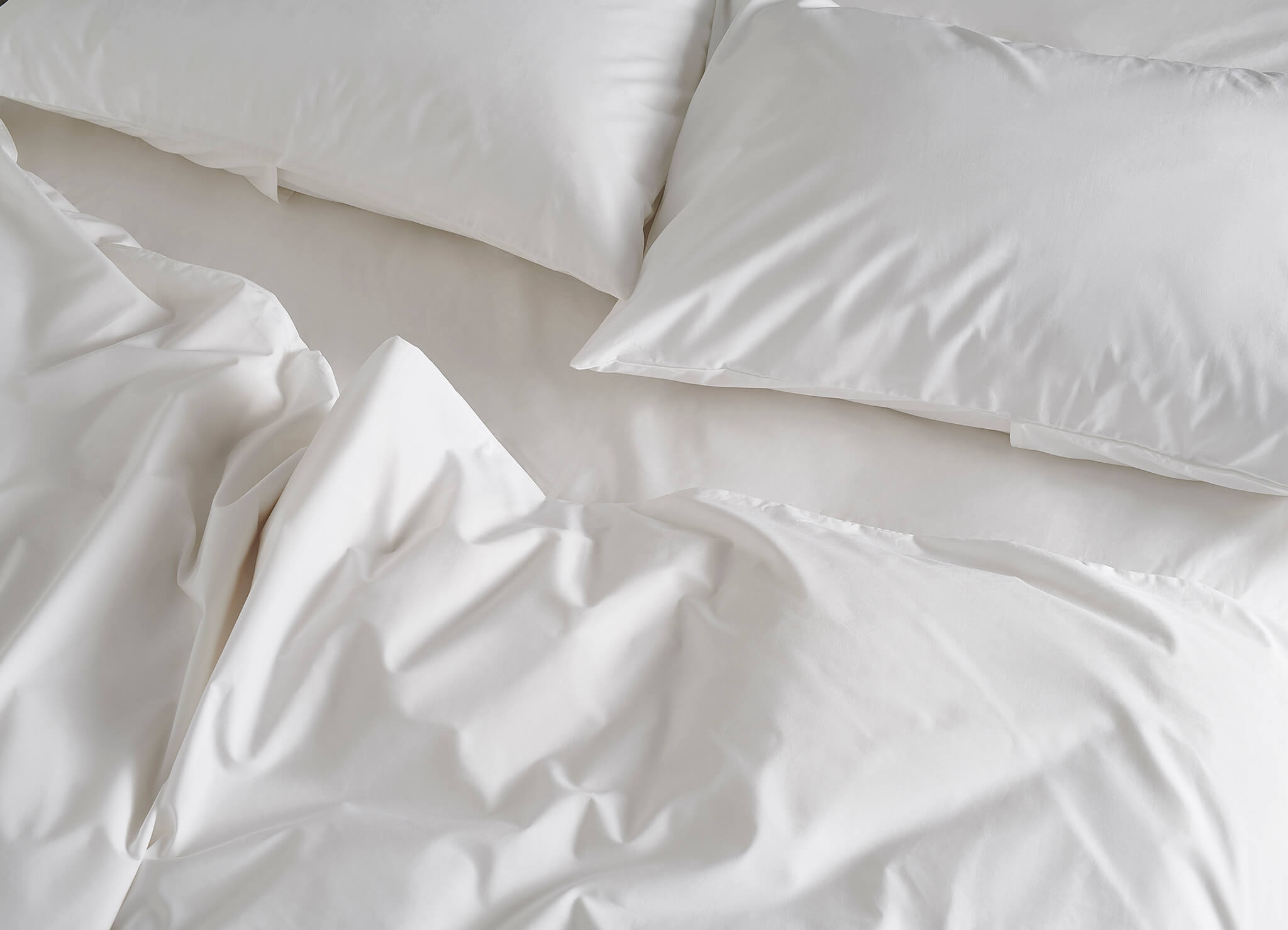
What is Egyptian Cotton? Is it All That?
Not all cotton is equal. That’s a fact.
You’ve probably heard of ‘Egyptian Cotton’; it’s forever being pointed to as the epitome of luxury bedding. But the truth is, Egyptian Cotton has been given a hugely overstated level of importance in the bedding world and buying it doesn’t guarantee a high-quality sheet.
So what is Egyptian cotton? Let us explain:
Where is Egyptian Cotton Grown?
Umm, that would be Egypt right? Well, in the main you’d be correct, but it’s widely known in the bedding industry that cotton labelled as ‘Egyptian’ is often not quite what it seems.
Egyptian cotton originates from cotton plants called Gossypium barbadense, which flourished along the River Nile in Egypt. The soil here has an inherent chemical composition that is suited to growing cotton.
These optimum growing conditions mean the plant produces long staple cotton fibres (the fine little strands that make up a raw piece of cotton). Long staple cotton fibres produce the softest, smoothest and most durable bedding.
Cotton in Ancient Egypt
Back in the day, the favourable climate & soil in Egypt rightly led it to be becoming known as the premier country for growing cotton. Unfortunately, once retailers and manufacturers latched on to the fact that customers were on the lookout for ‘Egyptian Cotton bedding', they looked for ways to stretch the definition, to include:
- Any sub-par, shorter staple cotton grown in Egypt.
- Egyptian cotton blended with cotton from other countries.
- Cotton grown from the Gossypium barbadense plant in other countries.
These loose definitions have led to an infiltration of lower quality cotton labelled as ‘Egyptian Cotton’. Given the worldwide supply of so-called ‘Egyptian Cotton’ far outstrips the physical production of the premium variety, it’s easy to see why this misinformation works for both manufacturers and retailers.
Egyptian Cotton Sheets vs Regular Cotton Sheets
With modern day farming knowledge and techniques, it’s possible to grow long staple cotton in other cotton producing countries of the world, so the exact origin is less important. And with all the funny business we’ve just told you about, even if you buy 100% Egyptian, there’s no guarantee that it’s the real deal.
What Should You Look For Instead?
Instead of looking for Egyptian Cotton bedding, it makes sense to look for the quality of true Egyptian Cotton; long staple fibres which make a soft and durable sheet. This is the single most important factor when determining the softness, smoothness and durability of your bedding. We keep coming back to it, but it’s just so important.
At Bedfolk, we exclusively use the finest cotton fibres in our bedding, which is why our sheets feel so good and last for so long.

Feeling is believing...
A Guide to Thread Count
As with Egyptian Cotton, you’ve probably always been told that higher thread counts equal better sheets. But this too is a hugely overstated indicator of quality sheets.
What is thread count? Put simply, it’s the number of threads in a square inch of cotton fabric. Over time, as retailers looked to differentiate between lots of bedding that all looked the same, thread count became a useful marketing tool – with higher thread counts becoming synonymous with higher quality. But much like cooking a nice meal, it’s the quality, not the quantity, of ingredients that really matters.
At Bedfolk we make all of our cotton bedding with 300 threads per square inch – it produces a lovely soft breathable sheet and hits the sweet spot of quality versus price. But don’t just take our word for it, check out some of the five-star reviews from our family of bed-folk.
What is Percale Cotton?
Once you’ve navigated the Egyptian Cotton and thread count myths, there’s one important decision you need to make to find the perfect bedding set – your weave. That’s the way that that the threads are woven together into a finished piece of fabric.
Cotton bedding is traditionally made in two different weaves.
Percale cotton uses a traditional criss-cross weave – one thread over, and one thread under.
Percale bedding is typically soft, crisp and airy, like the bedding you’ll wake up in in a lovely boutique hotel.

Laid-back and ultra-soft Relaxed percale cotton in Clay
What is Sateen Bedding?
Sateen cotton uses a less traditional ‘one thread over, three threads under’ weave.
Often mistaken for silk, cotton sateen bedding feels buttery soft and smooth to the touch, and has a subtle sheen that mellows beautifully after washing.

Silky soft and opulent Luxe sateen bedding in Ink
There's More to Bedding Than Raw Materials
Bedding might seem like a simple product, but in reality, producing high quality bedding is a complicated process requiring the very best raw materials, precision engineering, state of the art machinery, and skilled finishing. Every process along the way, from picking to combing to spinning and weaving, requires a high level of skill, care and attention.
At Bedfolk, we partner with a third-generation family run mill in Portugal. Our high calibre cotton sheets are woven and finished by master weavers, with exacting standards and unrivalled expertise. That’s how we make the comfiest cotton bedding that you’ll ever sleep in.



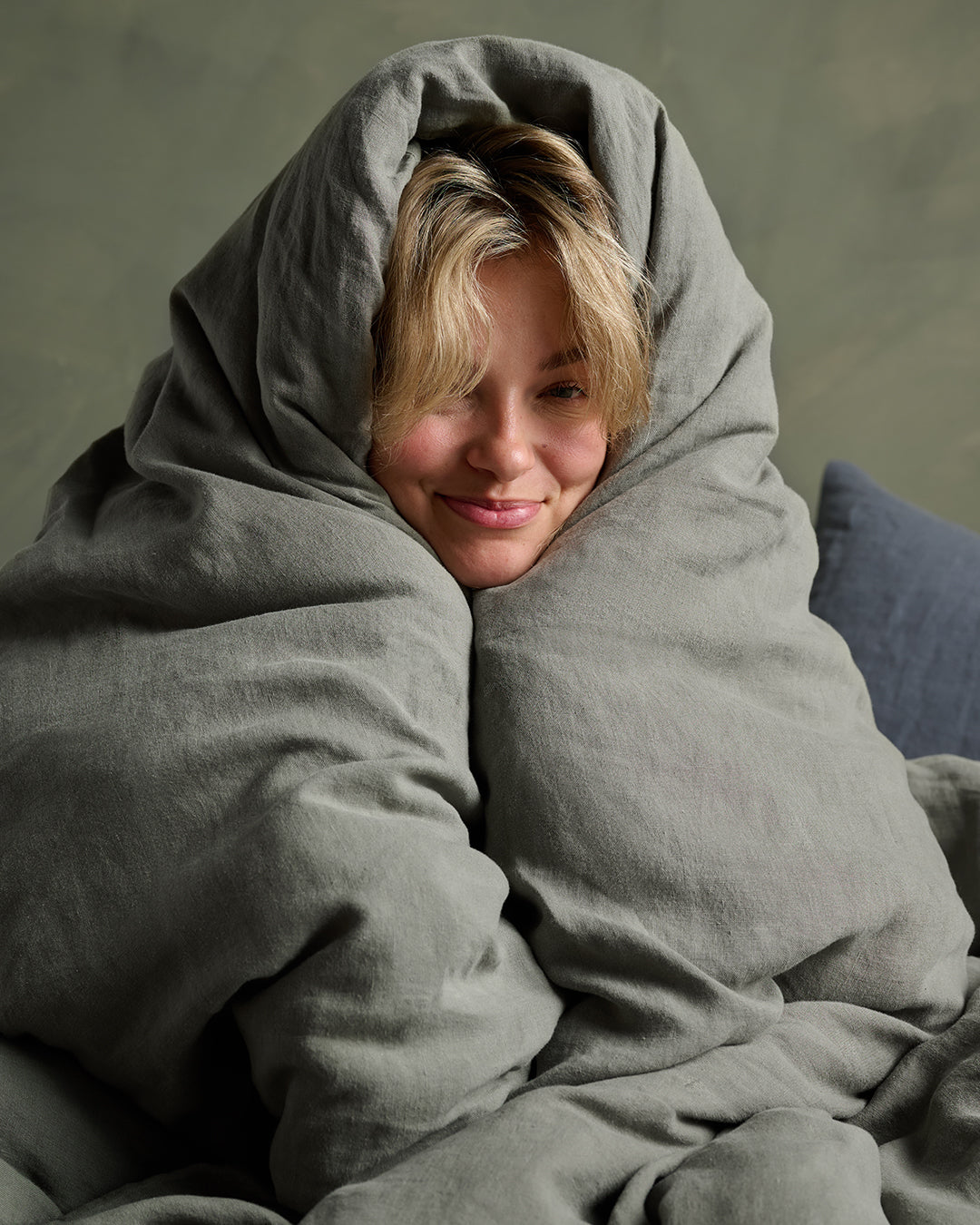
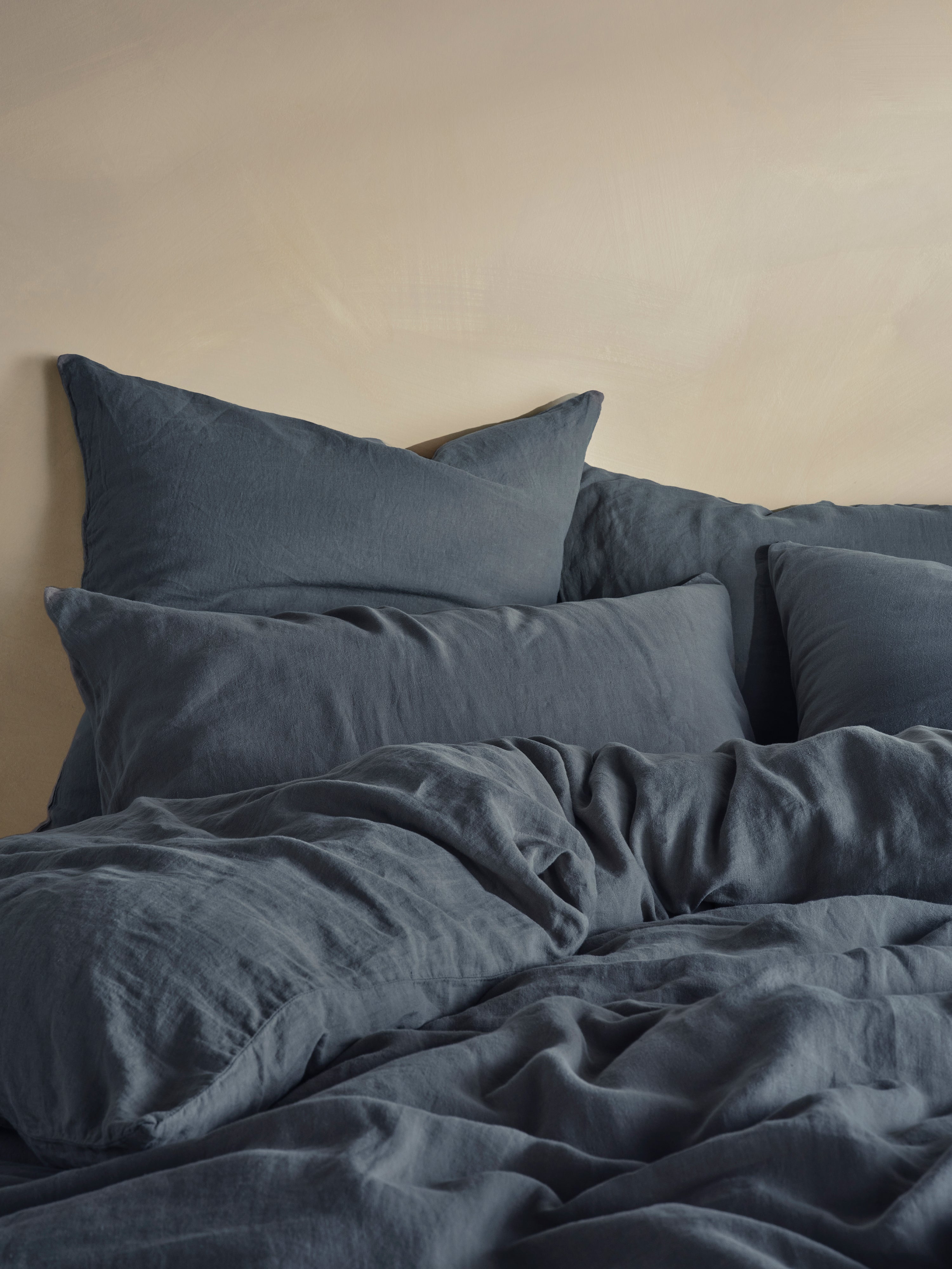
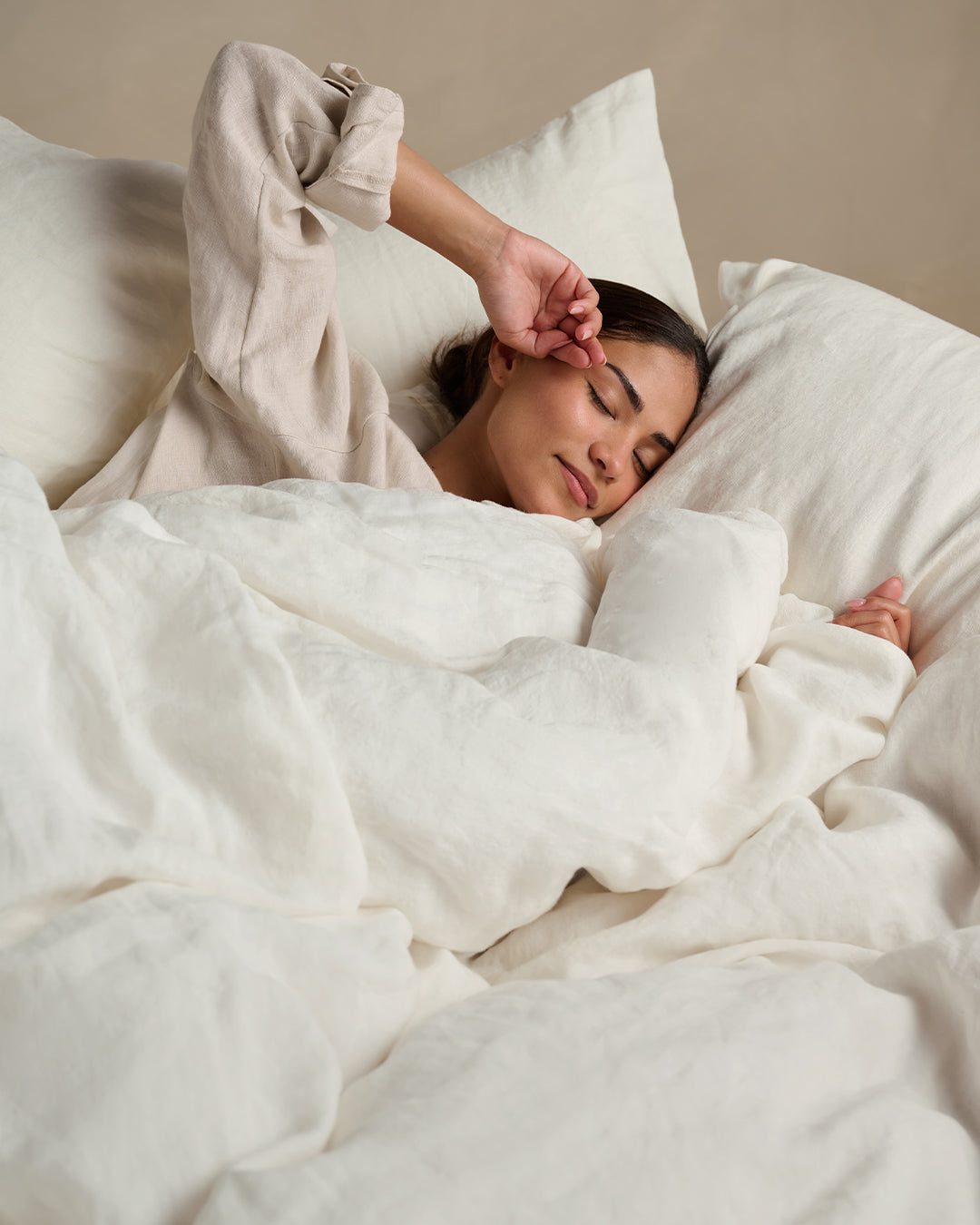
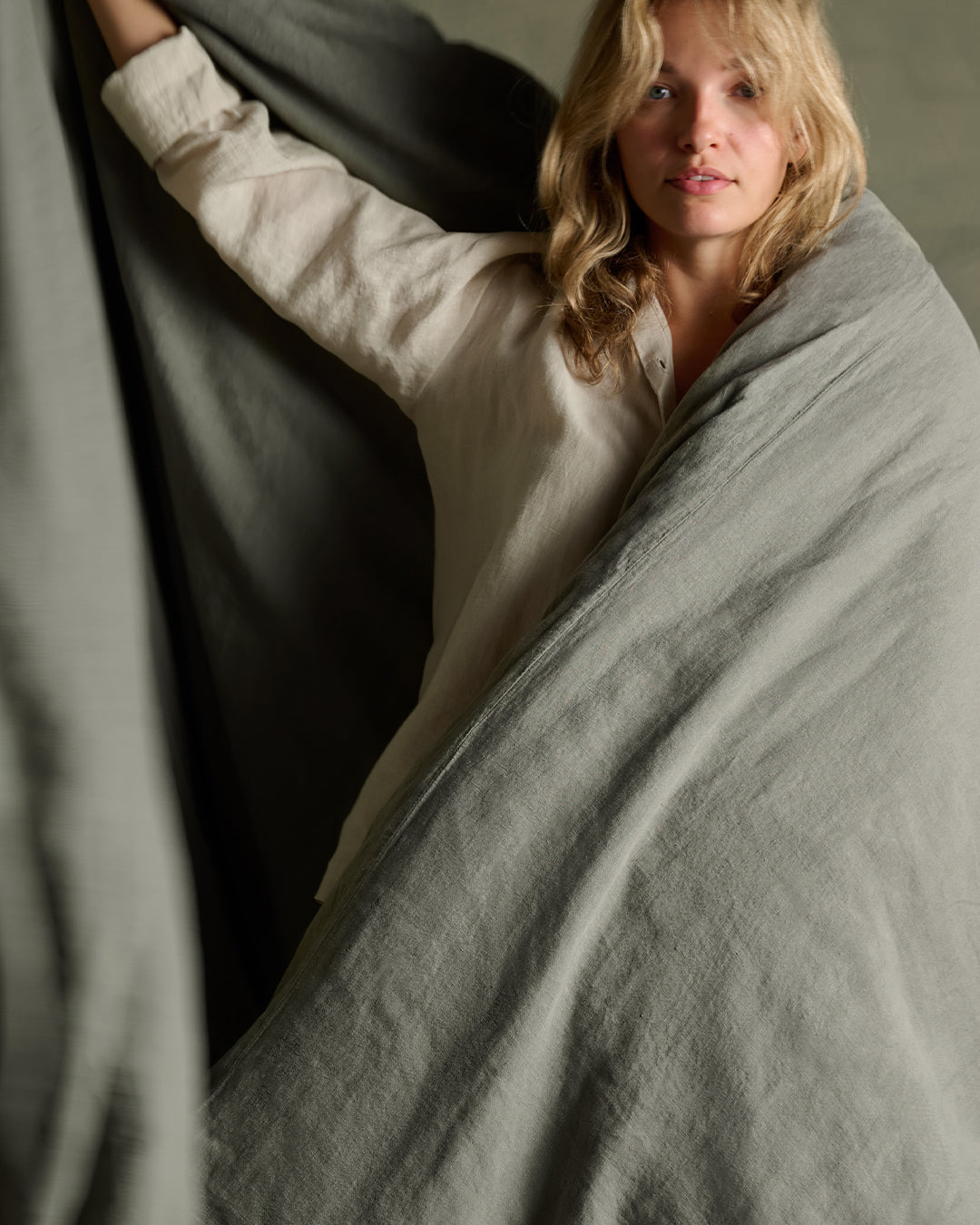


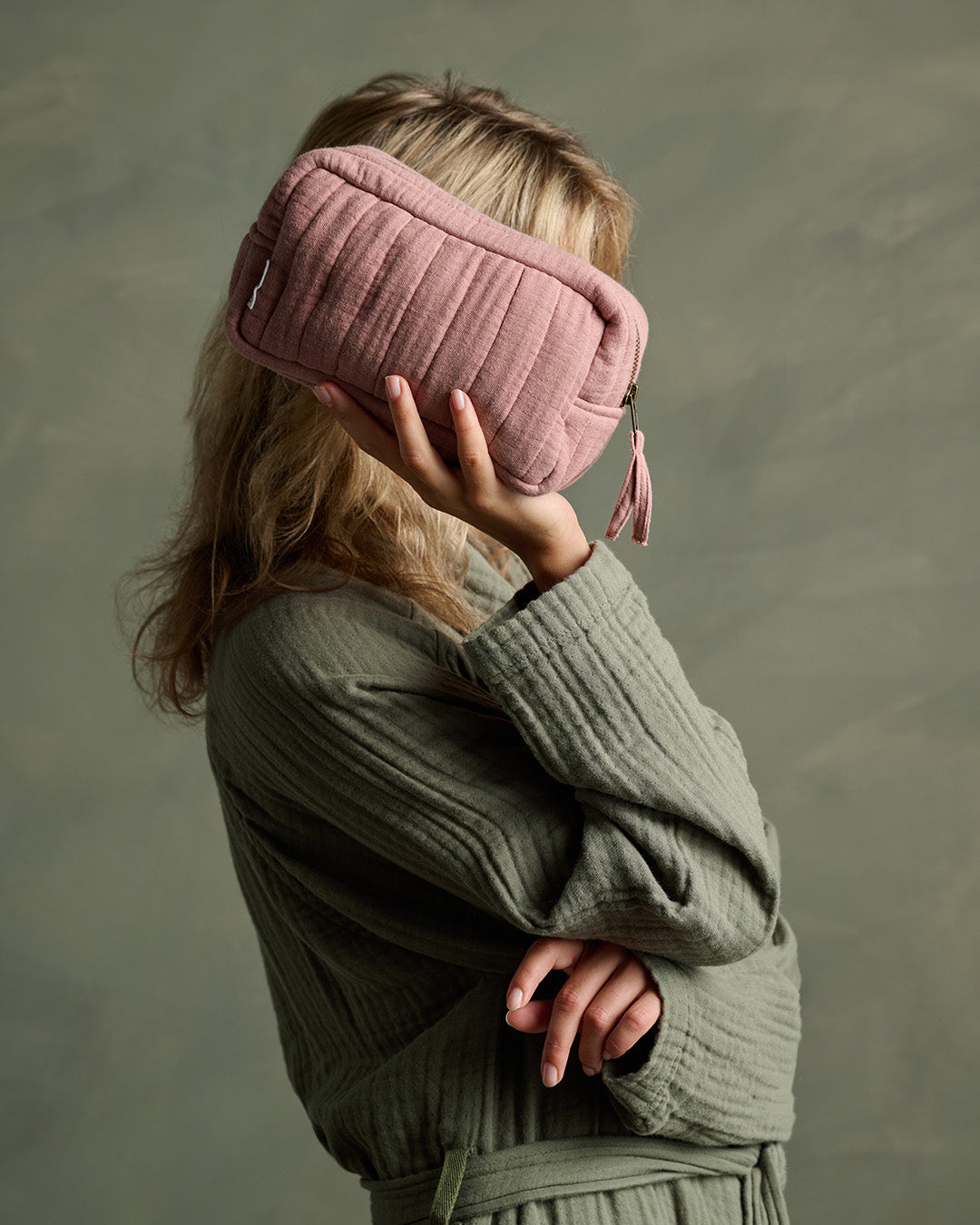


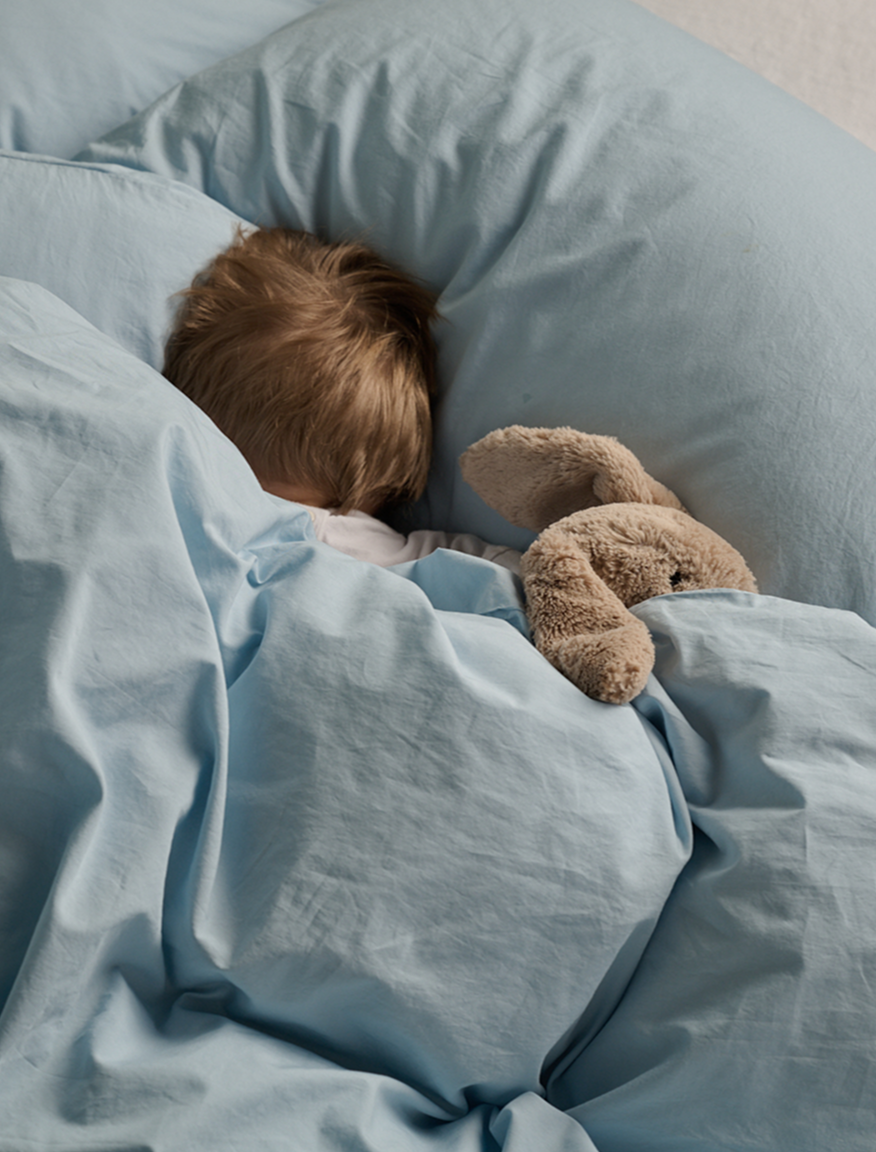
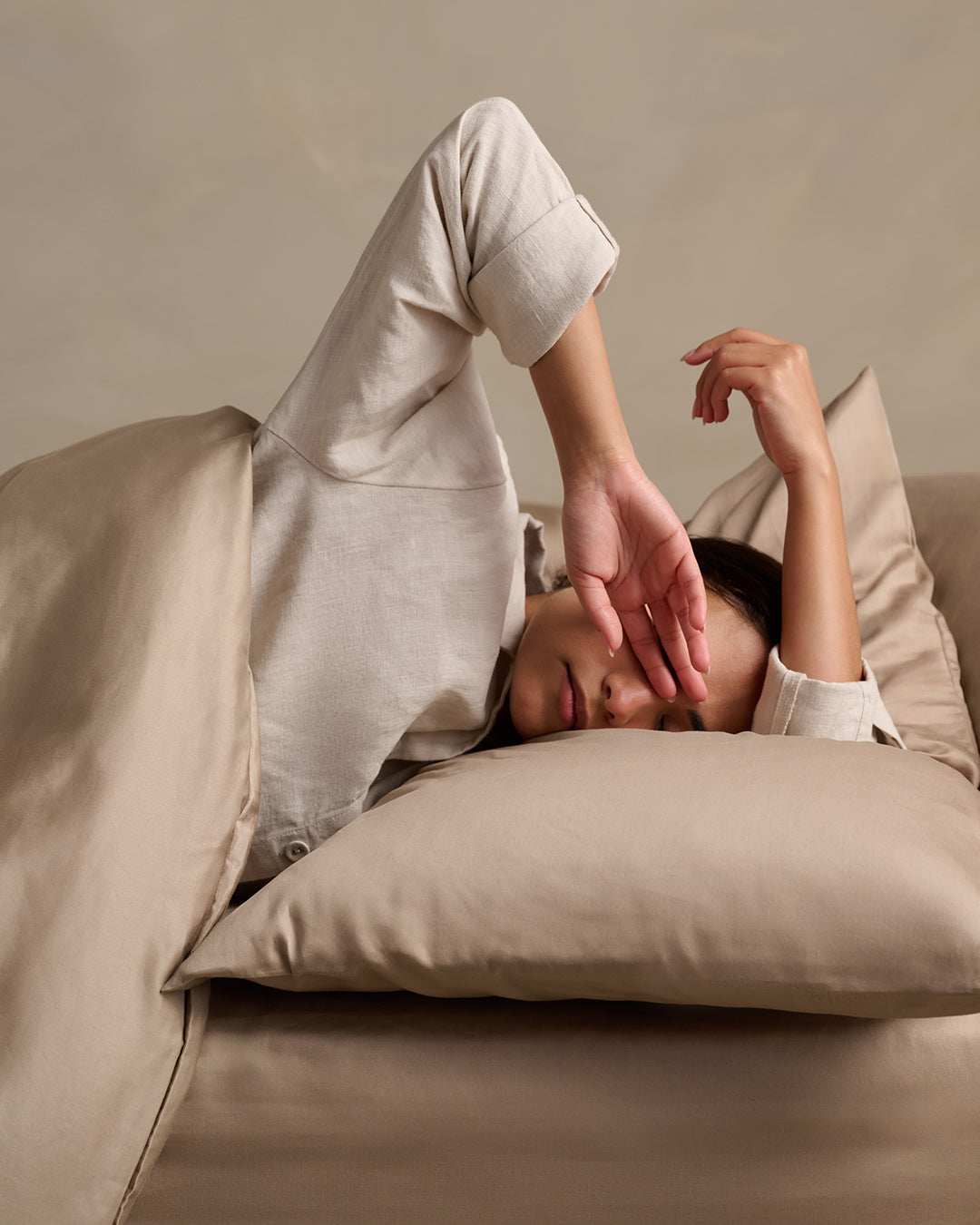
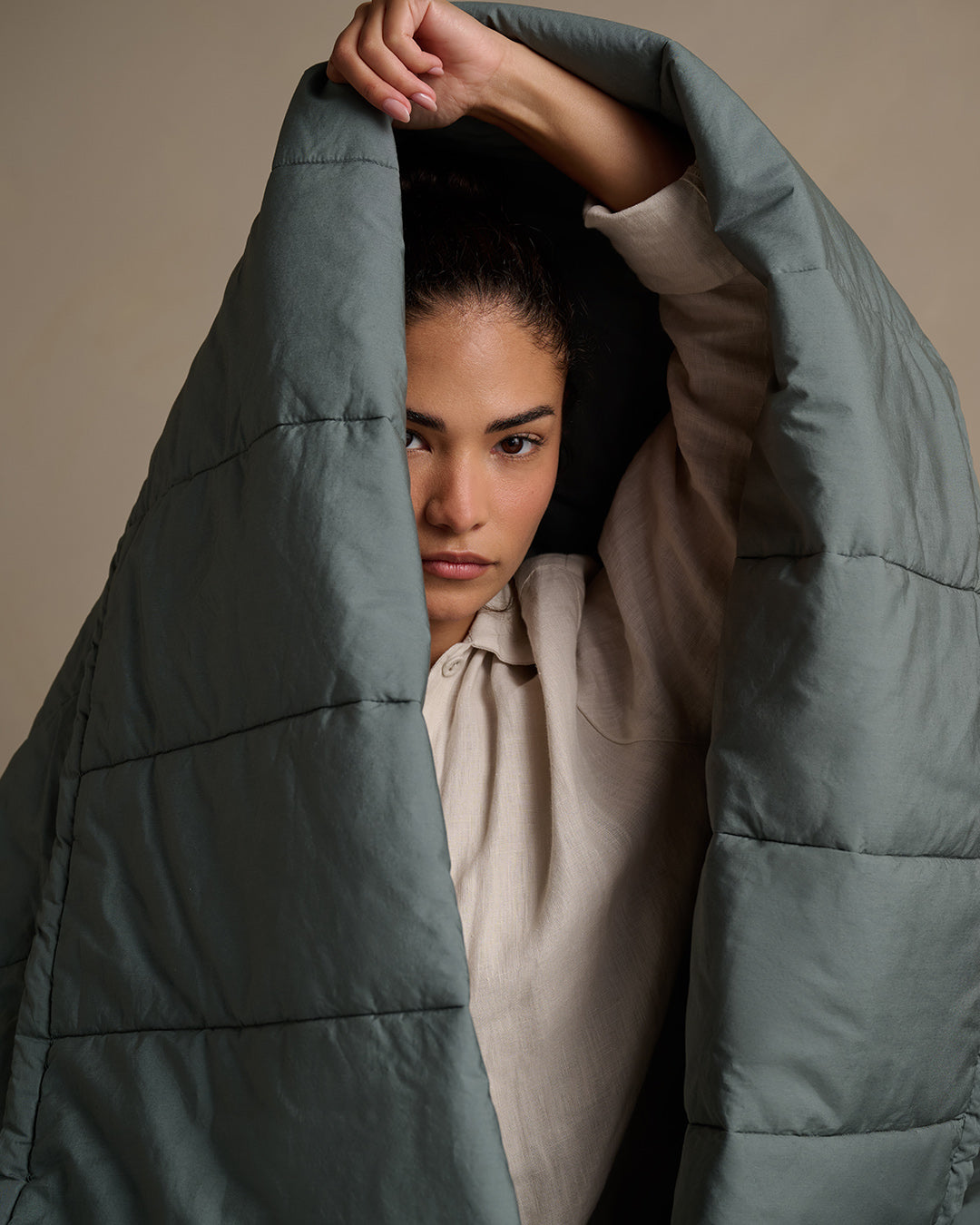


Leave a comment
This site is protected by hCaptcha and the hCaptcha Privacy Policy and Terms of Service apply.